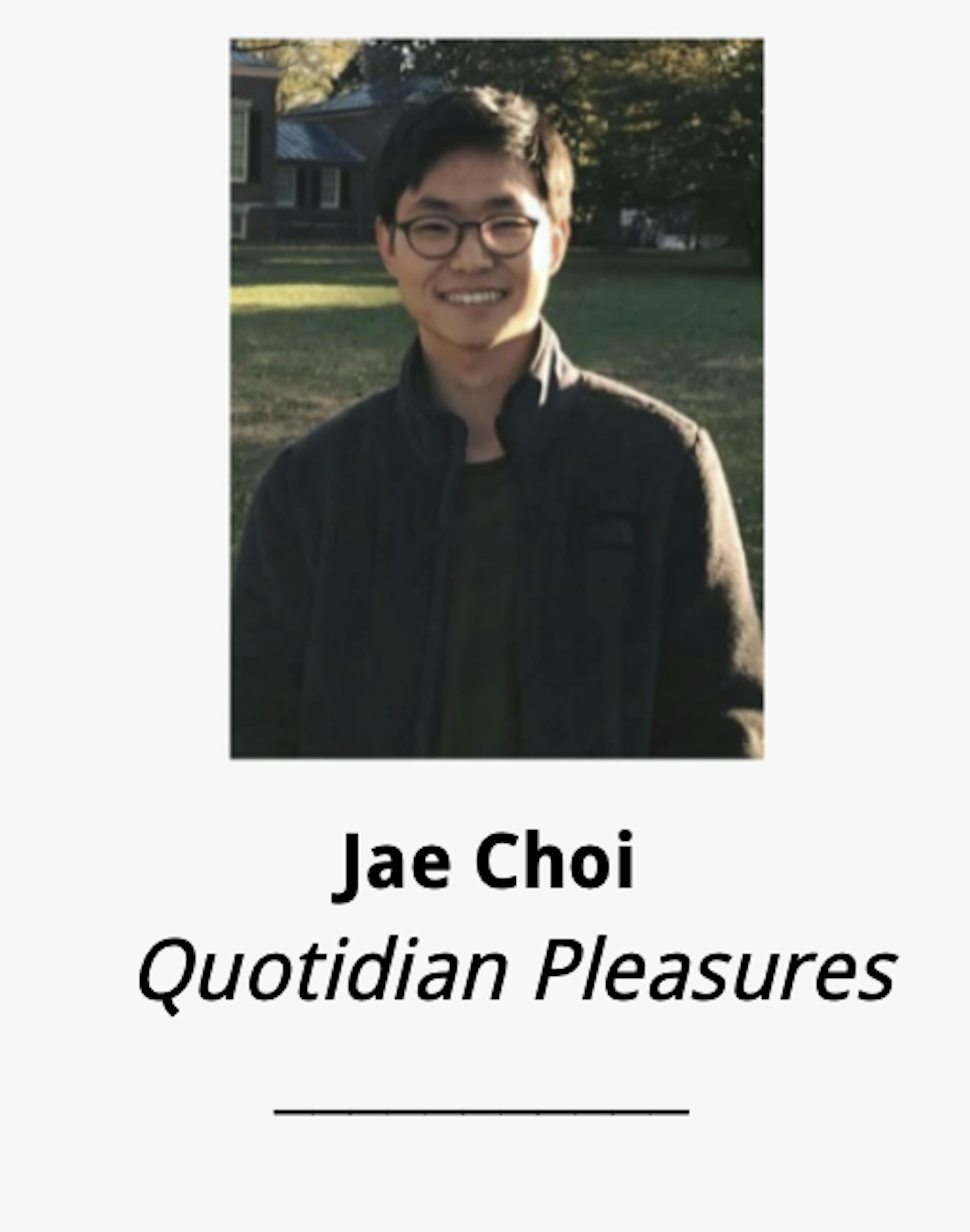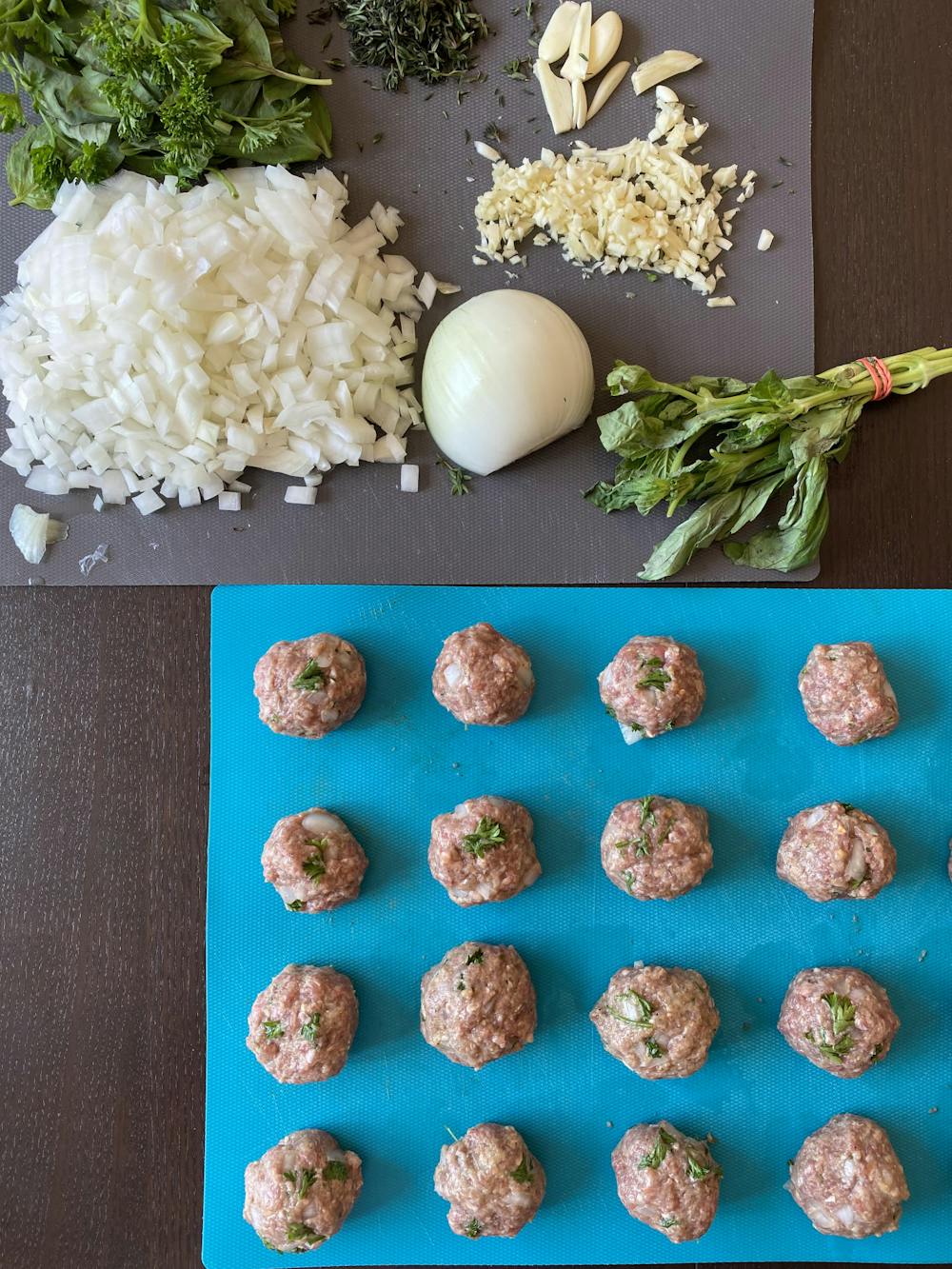
As soon as the canola oil and butter begin to sizzle at the bottom of the pot, I add half a cup of flour and feverishly stir the mixture with a wooden spatula. I keep the flame on high and wrestle with the resulting roux to keep it from burning. As it begins to change hue from bright blonde to dark chocolate, the green pepper, onion, celery and garlic — all finely diced — make their triumphant entrance. I then add the chicken and sausage, which I preemptively cooked brown on a neighboring stove with salt and pepper. This is followed by cajun seasoning, paprika, thyme and a few bay leaves.
The spices relinquish their flavor; the redolence is pure delight. At this point I’m supposed to add about six cups of chicken stock and a can of tomatoes, but since I forgot to buy those from Giant, I settle for water and a couple of chicken bouillon cubes. I bring the whole thing to a boil, cover the pot and then lower the heat to a simmer. Two hours pass. The last step is green onions and however much parsley is left at the bottom of the fridge. I taste the broth and fine-tune with salt. The gumbo is now ready.
Cooking is one of my favorite activities. The same thing goes for its logical conclusion: eating. What’s nice about cooking is that, aside from being a necessity (assuming that take-out every day is out of the question), it’s an occasion for rest and recreation. It’s a convenient hobby.
The way that cooking captures both necessity and pleasure isn’t something I see in a lot of other activities, at least from my experience. When I’m playing Among Us with my friends or watching a movie, that’s pure pleasure. When I’m studying for a difficult exam or setting up mouse traps in my apartment, that’s pure necessity. It’s not always the case that I’m utterly enthralled by some textbook chapter or that I’m relishing the possibility of a clean living space. These activities don’t always evoke in me the same kind of joy that cooking does.
But that’s not to say the balance between necessity and pleasure can’t be tipped.
When I’m prepping 12 servings of pasta sauce in a pot for a busy exam week, I’m not concerned with making it taste like something from Buca di Beppo; sometimes I’ll even skip out on making meatballs for the sauce. I just want to get it done as quickly as possible. It’s the same thing with making porridge to ward off an impending cold. Or adding extra kale and spring mix to a smoothie so that I can have a healthier breakfast. Making these things isn’t quite as enjoyable and neither is the eating. Messing up a recipe is no fun either. I can’t tell you the number of times I had to bite the bullet and painfully nibble away at burnt gumbos or curries that missed the mark because I didn’t want the food to go to waste.
But when the necessity of cooking and eating food approaches pleasure more closely — through the accumulation of skill and knowledge — is when the magic happens.
I feel that comfort foods strike this balance particularly well. I love preparing and wolfing down a savory sweet soba salad at the end of a long day. It’s my favorite comfort food, and every step of the recipe is pure fun, from roasting the red pepper flakes in sesame oil, to mixing the oil with honey and soy sauce, to running my hands through the soba noodles under cold water before mixing everything in a bowl.
I also see cooking as a way of building community. Every Saturday I get together with my roommates to make a big communal meal. We had stopped by H-Mart on a Saturday morning several weeks ago to gather ingredients for steamed bao. One person rolled the dough with a water bottle as a make-shift rolling pin. Another placed the meat and vegetables at the center of the flattened dough and laid it on a cutting board. I helped my third roommate fold the bao dough into neat pouches. We then cooked and steamed them on the stove. It’s not often that all four of us are gathered together in the same place doing the same thing, laughing and cracking jokes like this.
In a similar vein, cooking is a way of building friendship. Sometimes I’ll make an extra serving of my cajun-style gumbo or pineapple-shrimp Japanese curry to give to a friend. And sometimes my friends will give me a serving of their own food. There’s something gratifying about the ensuing exchange of compliments and critique: I always feel good, and I always learn something new.
Putting these different perspectives together, I realize that cooking is really just a reflection of me, my preferences, my failures, my accumulated knowledge, my habits, the things I care about and the way I relate to others.
But I think the way that cooking illuminates ways in which we relate to others (including ourselves) is the most crucial part. At its best, cooking is a labor of love, in every sense of the word: of love for others and a love for oneself. It’s a way of showing people you appreciate them, but it’s also a way of taking care of yourself. For me, cooking is a much-needed break from sitting all day at my computer. It’s a way of practicing mindfulness, of focusing on the present and letting my hands do their work. It’s a daily treat that I can always look forward to.
Through cooking so much over the past few months, I’ve realized just how significant it is to me. It’s an activity that has helped sustain me and maintain a semblance of normalcy through a tumultuous year. But most of all, cooking has helped me hold on to the relationships I care about and focus on the things for which I’m grateful. And that’s honestly better than any main course I could have asked for.
Jae Choi is a senior studying neuroscience and English from Carrolton, Texas. He is an aspiring M.D. candidate. In his column, he enjoys exploring ways of finding new significance in everyday activities and making sense of extended stays at home during the pandemic.





